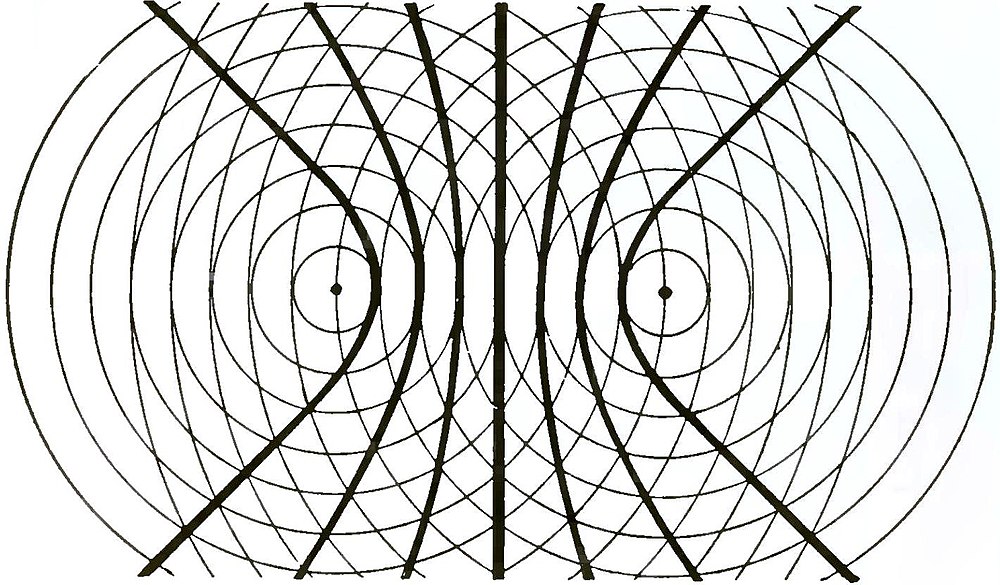Another striking instance of interference is furnished by two tuning-forks of nearly the same pitch. Take, first, two similar forks mounted on resonators. When these are sounded by a cello bow, the resultant tone may or may not be louder than the component tones, but it is constant—or, at least, dies away very slowly. If, now, one of the forks be loaded by  FIG. 12fastening a small weight to the prong, the sound sinks and swells at regular intervals, producing the well-known phenomenon of "beats." The maximum occurs when the two vibrations are in the same phase. Gradually the loaded fork loses on the other until it is half a vibration behind; then there is a brief silence. This may be shown graphically by allowing each fork to trace its own record along a piece of smoked glass, and by adding the two sine curves, as shown in Fig. 14.
FIG. 12fastening a small weight to the prong, the sound sinks and swells at regular intervals, producing the well-known phenomenon of "beats." The maximum occurs when the two vibrations are in the same phase. Gradually the loaded fork loses on the other until it is half a vibration behind; then there is a brief silence. This may be shown graphically by allowing each fork to trace its own record along a piece of smoked glass, and by adding the two sine curves, as shown in Fig. 14.
The matter of the interference of light waves requires special treatment on account of the enormous rapidity of the vibrations. This statement, however, inverts the actual chronology, for this rapidity is inferred from the interference experiments themselves.
